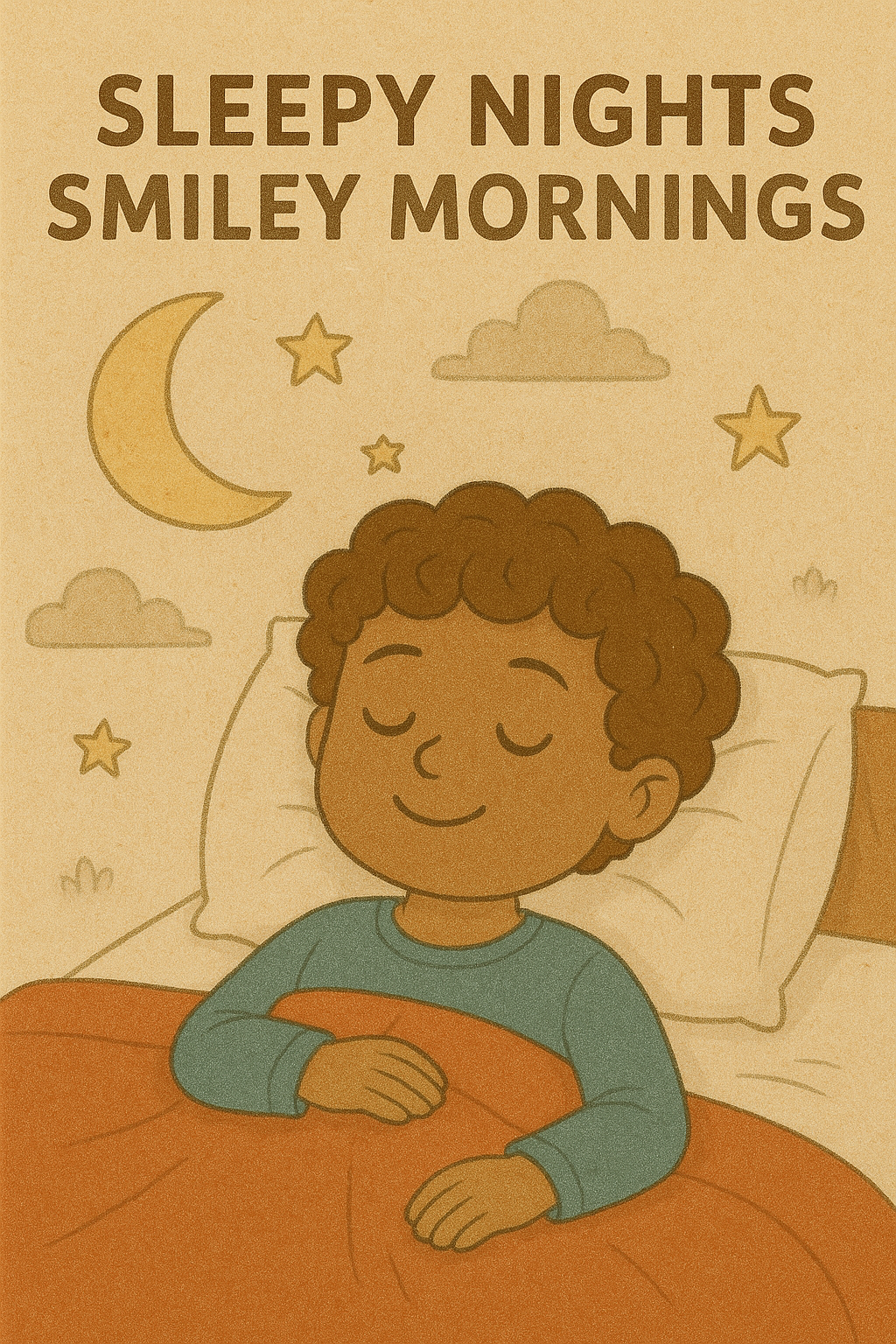Your basket is currently empty!

Sleepy Nights, Smiley Mornings
Bedtime can often feel like a battle. Between screens, energy still high, worries from the day, or simply a child resisting the inevitable rest, bedtime routines can become fraught. A mindful bedtime routine provides a warm, gentle bridge between wakefulness and sleep — helping children (and parents) let go of the day’s frustrations, settle their thoughts, and drift into peaceful rest.
👉 You might also like: 5 Simple Mindfulness Activities for Kids
What Does “Mindful Bedtime” Mean?
Mindfulness at bedtime is about more than simply switching off lights. It means creating a space — both physically and mentally — where the child transitions from “active” to “restful.” It includes slowing down, creating predictable rituals, bringing awareness to breath and body, and tuning into feelings — releasing worries, cultivating calm, and stepping into sleep without racing thoughts.
For more on this, see our Mindful Explorer Feelings Journal, designed to help kids practice awareness and gratitude daily.
Why It Matters — The Benefits
A mindful bedtime routine isn’t just about falling asleep more easily. Some of the key benefits include:
- Better quality sleep, which helps with physical growth, immune system health, and emotional regulation.
- Improved mood and behaviour, especially the next day. Children who wind down well tend to wake more rested, calmer, and more ready to engage.
- Reduced anxiety and worry, because practices like breathing, visualization, journaling allow children to express or release concerns.
- Enhanced mindfulness skills, such as body awareness, attention, and emotional self-regulation, which carry over into daily life.
- Strengthened parent-child connection, as these bedtime rituals are shared, calming, and trusting.
👉 Related read: Gratitude Practices for Kids
Components of a Mindful Bedtime Routine
Here are practical elements you can incorporate, ideally in this order (but adapt based on your child’s temperament and needs):
- Wind-down time (30-60 minutes before bed)
- Physical relaxation
- Mindful breathing
👉 Try this exercise from our Kids’ Breathing Techniques Guide - Body scan or progressive relaxation
- Visualization / Imagery
- Journaling or Gratitudes
👉 Our Mindful Explorer: Kids’ Feelings Journal makes this easy and fun. - Soft, consistent rituals
- Closing ritual
Tips for Parents: Making It Work in Real Life
- Start small
- Consistency is key
- Be flexible and responsive
- Model mindfulness
- Create the environment
- Limit stimulants before bed
Sample Routine: A 30-Minute Mindful Bedtime
Here’s how you might structure thirty minutes:
| Time | Activity |
|---|---|
| 0-5 min | Turn off screens, dim the lights; soft talking / transition time |
| 5-10 min | Warm bath or wash up, maybe gentle physical stretch |
| 10-15 min | Mindful breathing + body scan |
| 15-20 min | Visualization or guided imagery |
| 20-25 min | Journaling / sharing what went well + hopes for tomorrow |
| 25-30 min | Story or lullaby + affirmation + goodnight ritual |
Adjust up or down based on age (younger children often need shorter routines), temperament, or special needs.
What If It’s Still Hard?
Some children resist even the gentlest bedtime routines. Here are extra ideas:
- Use mindfulness audio resources
- Try emotion regulation tools earlier in the evening
- Introduce transitional objects
- Use visual schedules
- When anxious thoughts come, give permission: “It’s okay to worry; let’s name it, then let it go.”
👉 You might find our article on Self-Awareness useful here.
Long-Term Mindfulness: Growing Through Sleep
Over time, a mindful bedtime routine becomes a scaffold for lifelong habits:
- Children learn to self-soothe and manage stress.
- Better sleep supports memory, focus, emotional resilience.
- The family culture includes moments of stillness, of checking in, of gratitude — which support wellbeing far beyond bedtime.
👉 See how journaling can help in our Guide to Mindful Journaling for Kids.
Final Thoughts
Bedtime doesn’t have to be a nightly battle. With regular gentle rituals, mindful practices, and consistency, bedtime can become something children look forward to. Sleepy nights lead to smiley mornings — and the benefits ripple into how the whole family feels, learns, and grows.
👉 Explore our full range of Kids’ Mindfulness Journals to bring mindful practices into everyday life.